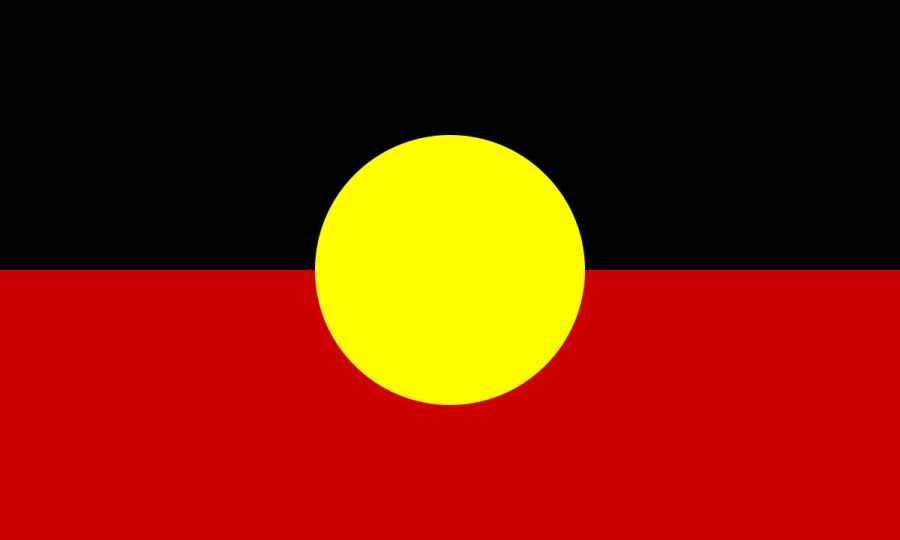In the fall of 2009, the Katzen Gallery at the American University Museum in Washington featured an exhibit of Aboriginal art called Culture Warriors. This traveling exhibition originated at the National Gallery of Australia as part of the Australian Indigenous Art Triennial. The triennial began in 2007, which was the 40th anniversary of the 1967 Referendum, when non-Indigenous Australians voted to include Indigenous Australians in the census, and the 50th anniversary of the National Aboriginal and Islander Day Observance Committee, which each July draws attention to Indigenous issues. The theme of the exhibition is linked to these anniversary celebrations that highlight the challenges and creative accomplishments of Australia’s Indigenous culture warriors from 1788 to the 21st century.
The 30 artists profiled, selected by Indigenous curator Brenda Croft, display paintings on canvas, bark, and paper; weavings; photos; video; and installations with an intricate blending of traditional materials and contemporary technologies. As a group, the artworks express a revitalization of cultural practices that the government previously tried to ban while simultaneously reflecting the 21st-century international art world. Walking through the three-level display at American University, viewers are awed by the size of some of the individual works, which cover entire walls, and the earth colors that make one feel part of a landscape.
Senior artists with a lifetime of cultural advocacy, midcareer artists, and emerging young artists are represented, with a special emphasis on five senior culture warriors, whose works span the four decades since the 1967 Referendum. Twenty-one of the artists, including the curator, were not even considered Australian citizens until 1967. Croft’s essay in the exhibition book, Cannot Buy My Soul, discusses how the title “Culture Warriors” and its timing relate to Australia’s current focus on issues such as nationalism, citizens’ rights, history, and culture. The selected artists address many of these issues, some using subtle messages, while some of the younger artists use a more “in your face” approach.
Regardless of whether they are creating traditional works or using more modern styles, Croft identifies all of them as contemporary artists because, “They are creating work in and of the here and now.” Art labels from the dominant culture, such as primitive, urban, naïve, folk, and authentic, do not apply because all of the artists self-identify as Indigenous, and their ancestry is the framework and foundation for their inspiration. Prior to the 1967 Referendum many of them had endured the devastating effects of colonization, including land theft, the forcible removal of children to boarding schools, and cultural losses such as language and spiritual rituals. However, art has always ensured Indigenous cultural continuity despite severe government obstacles. Communal origin narratives were visually expressed on rock and bark shelters, petroglyphs carved on trees and rocks, and etchings on weaponsand utilitarian items. The 19th century witnessed drawings of contemporary life and the evolving Aboriginal culture. The 20th century for some involved exposure to more formal Western art training and/or the opportunity to create works in community centers with little or no instruction but with art materials and studio space.
Due to the forced removals and land loss, the majority of Australia’s indigenous peoples now live in south-east states in urban areas, especially in Western Sydney. But urban indigenous residents still remain connected to their ancestral lands and customs through travel back home and their relationships with their elders.
Many of these artists have traveled abroad and are knowledgeable about the international art market, have benefited from artist residencies, and have participated in global exhibits.
Culture Warriors: Australian Indigenous Art Triennial does not attempt to be a complete chronological approach to Australian Indigenous art history. Rather, it is an ongoing effort that will take place every three years with new artists and new curators. Croft, the current curator, hopes all of the triennials will inspire, challenge, and encourage viewers to work for social justice by supporting Indigenous artists and their communities. In the concluding remarks of her essay Croft says, “You can buy their work, respect their visionary declarations and innovative contributions to contemporary Indigenous and Australian art, but you cannot buy their souls.”
Phoebe Farris (Powhatan) is the arts editor for Cultural Survival Quarterly.

